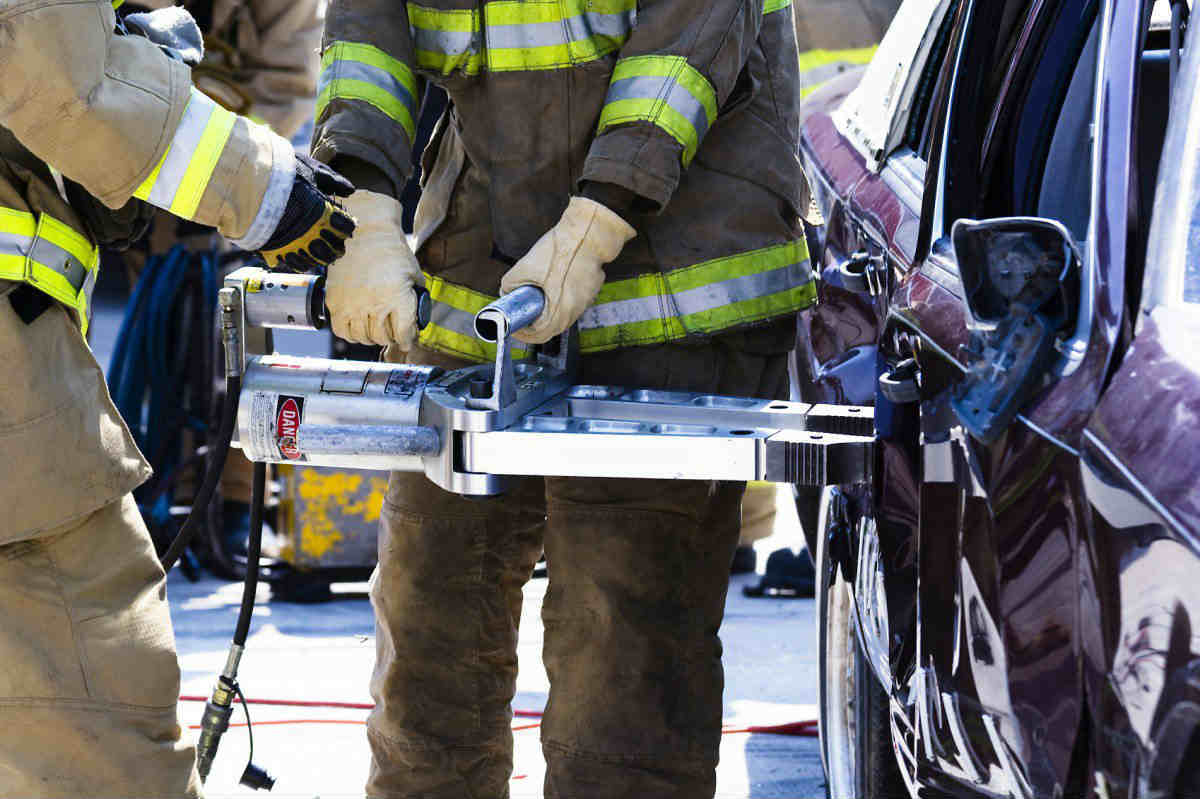Spinal cord injuries are common in car wrecks. Some of these injuries could be relatively less severe, but all of them more of less affect the life of the victim.
Accidents are common on our highways, but that doesn’t make them any less traumatic. Physical and emotional damage caused by a car accident can take a long time to heal. In some cases, the victim never recovers completely and has to live with permanent disabilities. One of the most serious injuries that can result from a car accident are spinal fractures. In this post, our we will discuss the two surgical treatments that the victim might need for a spinal injury resulting from a car crash.
What is a Spinal Fracture?
According to the American Academy of Orthopaedic Surgeons car crashes are one of the most common causes of spinal fractures. There are different types of spinal fracture. Some types are more serious than others. Spinal injuries caused by a car crash are usually accompanied by other injuries that will also need emergency medical attention.
The human back is an amazing network of muscles, tendons, and ligaments that are interwoven around vertebrae, discs and the spinal cord itself. But when a person is involved in a car accident, one or more of these parts can be injured and any injury to the back can be serious.
A spinal fracture is type of fracture in the vertebrae of the spine that can cause bone fragments to damage the spinal cord or nerves in the spine. They are a common car accident injury and they range from mild bruising to debilitating spinal cord damage. When there are multiple spinal fractures, the injury is typically serious. They are generally very painful and can make walking difficult and in some cases, cause difficulty in moving arms or legs, even cause paralysis.
Anyone who has a fracture of the spine is likely to feel some symptoms that are associated with damage to the spinal cord itself. These symptoms may include a feeling numbness or weakness and a tingling sensation, Bladder and bowel function may also be impaired. In the most severe cases, the spinal cord can be totally severed , resulting in the patient being paralyzed.
If you have injured your back in an auto accident, it is important to seek immediate medical attention. If an injury is not promptly treated, it can become worse, causing further injury.
What Causes a Spinal Fracture?
When there is extreme force or pressure applied to the spine, it may be too much for the bone within the vertebral column to support. The force causes the front of the vertebrae to fracture. If the entire vertebrae breaks, it can result in what is called a burst fracture.
When the force or pressure is excessive, the injury can affect the spinal cord or nerve roots. The side effects of such a serious injury can cause extreme pain and loss of feeling in arms and legs.
When there is any kind of impact, especially when a car is moving at a high speed and is struck by another moving car, the affect on the body can be severe enough to cause multiple spinal fractures.
Anterior Cord Syndrome
This type of injury occurs when the blood flow to the front of the spinal cord gets interrupted. Also referred to as anterior spinal artery syndrome, this type of injury is common in St. Louis car wrecks. A common symptom of this injury is numbness in the area below the point of injury in the spine. The victim may experience complete loss of muscle activity in that area. Because this type of injury affects only the front of the spinal cord, the injured person may still have some sensation in the affected area, including the ability to recognize touch below the point of injury. Anterior cord syndrome is not completely curable, but with the right treatment, the victim can experience some improvement.
Brown-Sequard Syndrome
If blood flow to either the left or the right side of the spinal cord gets affected, a victim is likely suffering Brown-Sequard Syndrome. Only one side of the body (left or right) experiences loss of movement, while the other side retains its usual ability to move or maintain motor function. However, some victims may experience loss of sensation in the other side of the body as well. Brown-Sequard-Syndrome (BSS) is also referred to as partial spinal sensory syndrome, hemisection of the spinal cord, spastic spinal monoplegia syndrome, and hemiparaplegic syndrome.
Burst Fracture
These fractures occur when an extreme force crushes the vertebra. The vertebra collapses, and bursts in multiple directions, sending small pieces of shattered bones into the spinal tissue. Burst fractures are the most severe type of compression fractures, and in most cases, they are unstable. Burst fractures can damage tissues and nerves during the break leading to spinal deformity and causes walking difficulty. Burst fractures require immediate treatment.
Cauda Equina Lesion
This type of injury occurs when the cauda equine or the nerve roots at the base of the spine gets injured. If you suffer this type injury, your doctor may recommend an immediate surgery to get the nerves back to proper working condition. If properly done, the surgery can help avoid the long-term consequences of cauda equina lesion.
Central Cord Syndrome
This type of injury occurs when blood flow to the central part of the spinal cord gets interrupted. This may occur if the neck is hyperextended. Some common symptoms include loss of movement in the legs, feet, hands and arms. In most cases, the victim’s hands and arms get affected. In some cases, the victim may experience loss of bladder control as well. Common treatment options for central cord syndrome include surgery, physical therapy, and occupational therapy. The victim may need long-term hospitalization. Even then complete recovery is not guaranteed.
Crush Fracture
In this type of fracture, not just the front, but the entire vertebra suffers a break, and collapses in on itself. They are generally more serious than wedge fractures, but are usually mechanically stable. The patient may experience a sudden and sharp pain in the lower or middle back after the injury.
Flexion Distraction Fracture
A car accident can bend the spine in a way that it places immense stress on the vertebrae causing a flexion-distraction fracture. Although the spine is capable of flexing forward, but any sudden movement can cause one or more vertebra to break. These types of fractures normally affect the middle or posterior column of the spine.
Nerve Cell Injuries
This type of injury can cause varying degrees and types of symptoms depending on the nerves that are injured. It normally leads to a loss of motor and sensory function in the injured area of the body that is affected by the injured nerve root.
Posterior Cord Syndrome
This type of injury affects the back part of the spinal cord, and is relatively less common than the other types of spinal cord injuries. Because the back part of the spinal cord is mainly responsible for sensory information, a victim of posterior cord syndrome may have a problem with sensory input, but their motor functions are usually normal.
Spinal Contusions
When a person sustains a spinal contusion as a result of car accident trauma, he or she may experience symptoms such as bruising, bleeding, and inflammation of the blood vessels.
Wedge Fractures
Compression fractures usually affect the lower back, in the lumber or thoracic spine. While the most common cause of these fractures is osteoporosis, trauma resulting from a car crash can also cause it. Of the three different types of compression fractures, wedge fractures are the most common, which occur when the back of the bone remains intact, but the front of the vertebra collapse forming a wedge shape. This vertebra is still mechanically stable, and can function and carry the person’s weight. However, it can cause neurological problems, and if left untreated, it can cause spinal deformities.
Treatment for Spinal Fractures
Some spinal fractures are treated with immobilization in some type of brace for as many as 12 weeks. This reduces the pain and will prevent deformity of the spine.
Other types of spinal fractures need to be treated with surgery. For example, vertebroplasty is a newer surgical procedure where a special type of bone cement is injected into the vertebrae that is damaged.
In some cases the broken vertebrae is surgically removed and replaced with a plate, screws or cage.
There is always some risk associated with these types of surgery. Some of these risks include nerve damage, infection, and stiffness. So even if surgery is required, there is no guarantee that the victim will have a complete recovery. Additionally, the cost of surgery, therapy and rehabilitation can take a toll on a victim both physically and financially.

